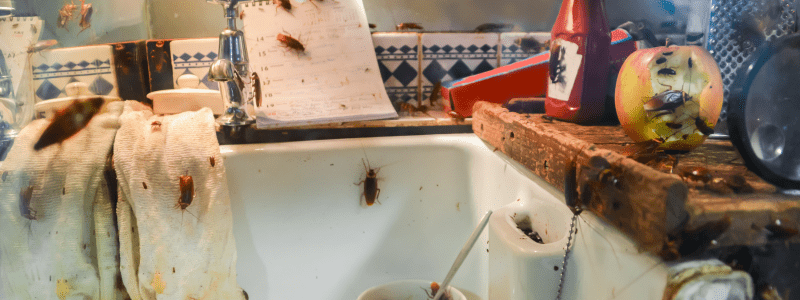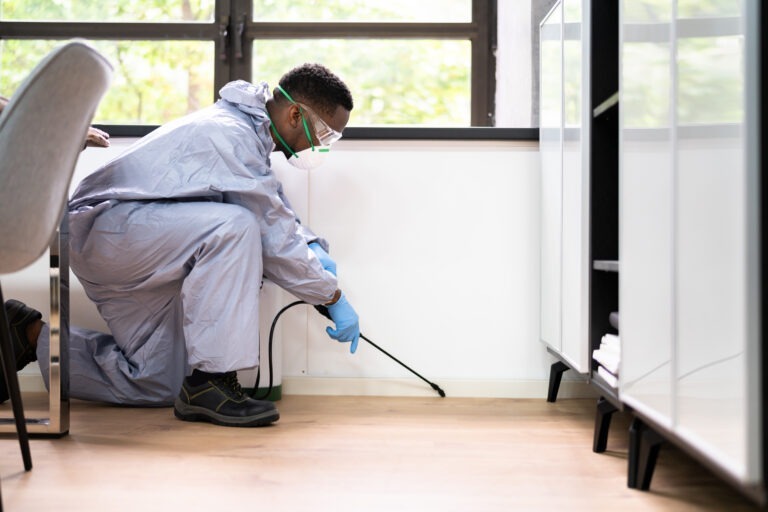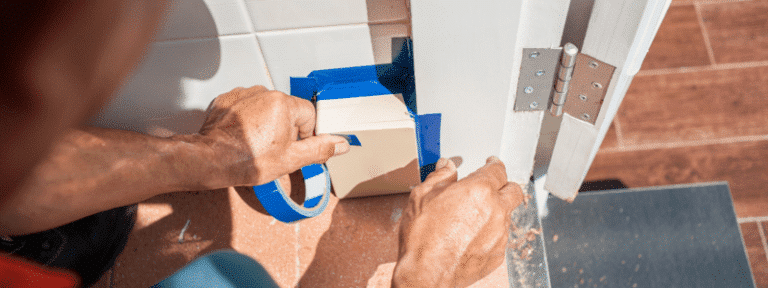Pests contribute to the shutting down of establishments and permanently damaging reputations. How can we argue with that? No one wants to eat at a restaurant with rats in the kitchen and cockroaches in the dining room.
That’s where we come in.
Pest control is an essential part of any restaurant’s health maintenance routine. Our professionals keep out the bugs and rodents so you can continue serving customers without fear of an infestation.
In this blog on the common pests in restaurants, we’ll look at the following:
- Overview of Common Pests in Food Service Establishments
- Identifying Common Restaurant Pests
- Preventive Measures Against Restaurant Pests
- Pest Control Strategies for Restaurants
- Health Regulations and Compliance
Overview of Common Pests in Food Service Establishments
Some pests are much more likely to be seen in restaurants than others. Catching a fly hovering around the dishwasher is more common than a dragonfly. Because of this, you need to educate yourself on which bugs like to get into your establishment, including:
- Cockroaches
- Flies
- Ants
- Spiders
- Rodents
- Stored product insects (weevils, moths, beetles)
Identifying Common Restaurant Pests

Recognizing Signs of Infestation in a Restaurant Environment
It’s not enough to recognize what pests look like; you need to know how to pick up on signs of an infestation even if you never see the pests themselves. The most common infestation indicators to look for are:
- Spotting eggs, nests, or droppings
- Damage to equipment and food packaging, such as gnaw marks on plastic
- The smell of ammonia
- Strange noises like scurrying in walls and cabinets
Common Pests: Rodents, Cockroaches, and Flies
Rodents
Phoenix is home to an abundance of rat and mouse species. These rodents spend their time searching out food, water, and shelter, which your restaurant conveniently supplies. When rodents get into your building, they can get into everything. You may see signs of their existence through droppings found in food and bite marks in packaging. Rodents aren’t only nuisances; the surfaces they come in contact with can trigger foodborne illness outbreaks, some of the most common being hantavirus, Lassa fever, and monkeypox.
Cockroaches
In terms of being disease-ridden and dirty, cockroaches are the smaller version of rodents. Even worse, cockroaches can squeeze through small entry points in the foundation of your building to access food and shelter. They can infect surfaces, contaminating food in the process, with intestinal diseases like cholera, typhoid fever, and dysentery. With their resilience and quick reproduction, restaurant pest control is the best way to eliminate an infestation.
Flies
After hearing about rodents and cockroaches, flies may seem like low-maintenance pests, but unfortunately, they come with serious risks. Flies are known for spreading disease from surface to surface. People may not realize the reality of fly-spread diseases and, as a result, are much less alarmed by a fly landing on their food than they are a cockroach. Flies do just as much damage, transmitting food poisoning, dysentery, and diarrhea. Don’t be fooled by their abundance; flies are just as nasty as any pest.
Preventive Measures Against Restaurant Pests

Best Practices in Restaurant Cleanliness and Sanitation
Keeping your restaurant clean and sanitized is crucial in preventing infestations. Pests like dirty, odorous environments, so it’s your job to make your restaurant the opposite. Some practical ways to do this include:
- Properly disposing of food waste
- Drying up floor drains and spills
- Eliminating standing water
- Properly seal lids when storing food and consistent food safety practices
- Mop and vacuum frequently to remove crumbs and spills
- Don’t let trashcans build-up
Structural Maintenance to Prevent Pest Entry
Make sure the building is up to par in stability and integrity. Any unsealed areas or weakened beams can be invitations for serious infestations. Keep in mind the following practices:
- Keep storage areas clean and organized; these are hot spots for pest activity
- Close cracks and gaps in windows and walls
- Avoid leaving windows and doors ajar
- Remove moisture and humidity
- Remove material piles that provide damp or dark hiding places (e.g., cardboard boxes, wood piles, trash, clutter, etc.)
Employee Training and Awareness Programs
Stay on top of employee training that reinforces pest prevention measures. It only takes one invitation, like an abandoned spill or ajar door, to allow pests into your restaurant. Consider the above suggestions when reminding your employees how to keep a pest-free workplace.
Pest Control Strategies for Restaurants

Integrated Pest Management (IPM) in the Food Service Industry
The integrated pest management (IPM) program is an effective form of pest control that minimizes the use of chemicals by incorporating three elements into its process: preventative measures, identifying and eliminating current pests, and controlling the environment.
Along with getting rid of current pests with pesticides, IPM also manipulates the environment and takes measures to prevent future pest problems. This might look like closing up openings in the building’s foundation or placing insect deterrent plants on the restaurant’s exterior.
Choosing Safe and Effective Pest Control Methods
Many people have concerns with pest control, choosing to DIY it or avoid it altogether. Both of these methods can lead to ineffective, even harmful results. DIYing is helpful to an extent, but keep in mind that store-bought products can be detrimental when misused. Likewise, professional tools and products are only accessible to experts trained to use them correctly. Your best bet for keeping pests away is to go with professional IPM pest control.
Health Regulations and Compliance

Understanding Health Codes Related to Pest Control
Every six months, your health inspector reviews your restaurant from head to toe. To give you a grasp of what they’re looking for, consider the example checklist below.
Rodent Activity
1. Are all countertops and floors free of rodent droppings?
2. Are cabinets, doors, and walls free of animal hair?
3. Are any movement, gnawing, or squeaking sounds coming from the ceilings, walls, or cupboards?
4. Is there any debris, such as cardboard, rags, straw, or paper, that rodents could use to make nests lying around?
5. Have any gnawing marks been noticed on food containers, wood, conduits, soap, soft metals, or cables?
Insect Activity
1. Have any insects been trapped in the sticky traps placed around the property?
2. Is there any evidence of debris or damage that points towards the presence of insects?
3. Have any body parts of insects (shed exoskeleton or wings) been found on the premises?
4. Is there any musty smell?
5. Are there any insect droppings?
6. Have any remains of dead cockroaches or other dead insects been found?
Keeping Detailed Records for Health Inspections
Be prepared when the health inspector arrives by having the necessary documentation ready for them. These show you’re prepared and staying on top of the health and integrity of your restaurant.
Include items and information like:
- Service reports since the last health inspection
- Inspection and corrective action reports
- Pesticide usage logs
- Labels and Material Safety Data Sheets (MSDS)
- Pest control company licenses and insurance certificates







